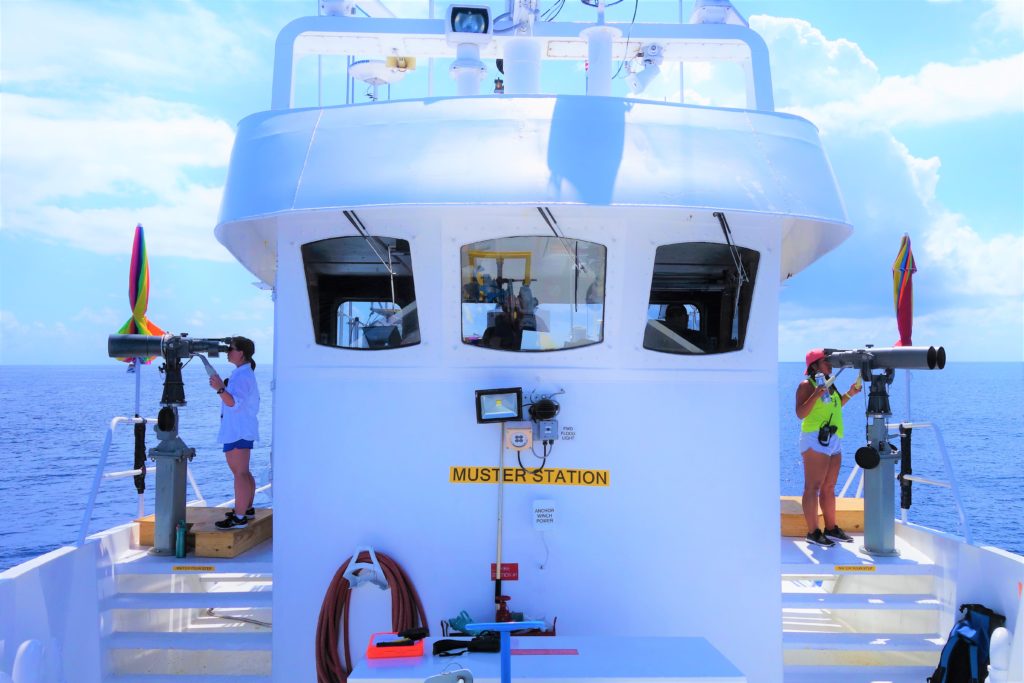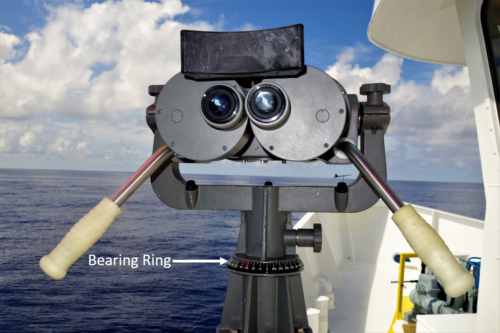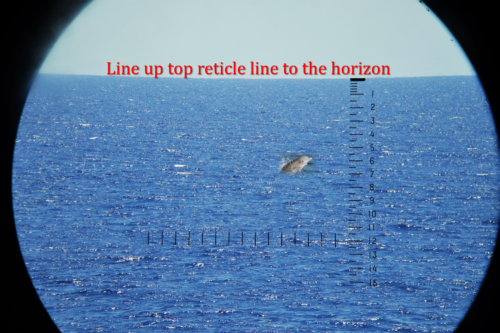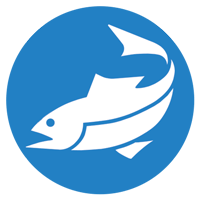Written by: Amy Whitt
Our research team simultaneously listens and looks for marine mammals using acoustic and visual survey methods. We use the hydrophone (underwater microphone) array towed by the ASV to collect real-time data on underwater sounds. While the acousticians from Seiche Limited analyze these data to identify the sounds of marine mammals underwater, our visual survey team scans the water’s surface to find marine mammals when they surface.

The main goal of these visual surveys is to detect and identify the species of marine mammals that the acousticians are hearing. Some species like sperm whales have very distinct vocalizations so that the acousticians know they are sperm whales when they hear them. However, other marine mammals like some of the dolphin species are not easily distinguished by their vocalizations. Therefore, our visual team helps our acoustics team figure out what species they are hearing and recording.

 The big eyes have a bearing ring so when we see a mammal through the big eyes, we can get a reading of the position of that mammal in relation to our trackline (our line of travel). There is a pointer on the binoculars that indicates the bearing that the binoculars are aimed. For example, a bearing of 0 means that the mammal is directly on our trackline (and directly ahead of the ship), while a bearing of 36 right means that the animal is 36 degrees to the right of the trackline.
The big eyes have a bearing ring so when we see a mammal through the big eyes, we can get a reading of the position of that mammal in relation to our trackline (our line of travel). There is a pointer on the binoculars that indicates the bearing that the binoculars are aimed. For example, a bearing of 0 means that the mammal is directly on our trackline (and directly ahead of the ship), while a bearing of 36 right means that the animal is 36 degrees to the right of the trackline.
In addition to the bearing of the animal to the trackline, we measure the distance of the animal to the trackline (and our ship). We measure this distance using the reticle lines that are inside the big eyes (see image below). When we see a mammal through the big eyes, we line up the top reticle line on the horizon, and count downwards along the scale until we see what reticle line is level with the mammal we just saw. Below is an example of what our observers see through the big eyes. The leaping bottlenose dolphin in this image is at reticle 7 which equates to about a third of a nautical mile (580 m) from the ship. We always make the reticle measurement to the bottom of the whale or dolphin. Because the height of the bridge deck above water and the average observer eye level height are known, an equation can be used that converts the reticle measurements to distances.
When we see a marine mammal, we radio the acoustics team so that they know what species we are seeing in the study area and they can match this information with the vocalizations that they are recording at the same time. Two observers and two big eye binoculars allow us to maximize our chances of seeing whales and dolphins when they are at the surface. Since all marine mammals breathe air, they must come up to the surface at some point. Of course, some mammals dive for long periods of time and do not spend much time at the surface (e.g., sperm whales and beaked whales). The more eyes we have on the water, the better chance we have of detecting a marine mammal when it is at the surface.

***This blog article is part of our LADC-GEMM 2017 Survey blog series. Check out more articles in this series here, on the LADC-GEMM website, and on Alexandria Hahn’s blog. Also, be sure to “Like” the new LADC-GEMM Facebook page!***

